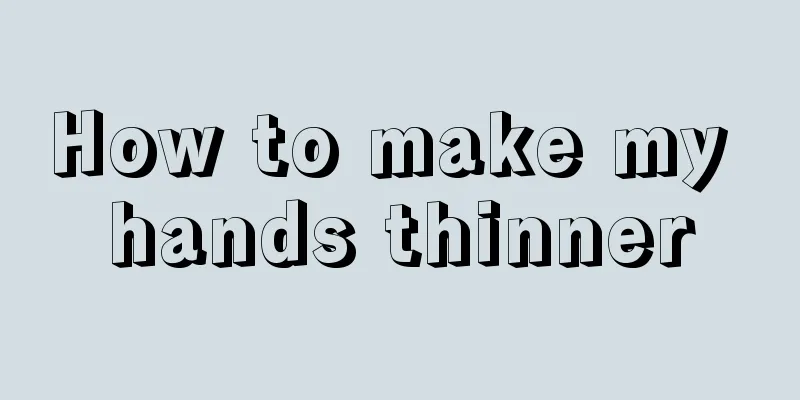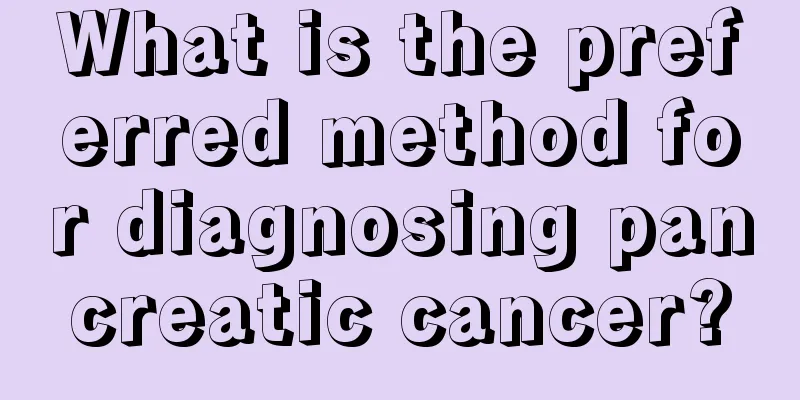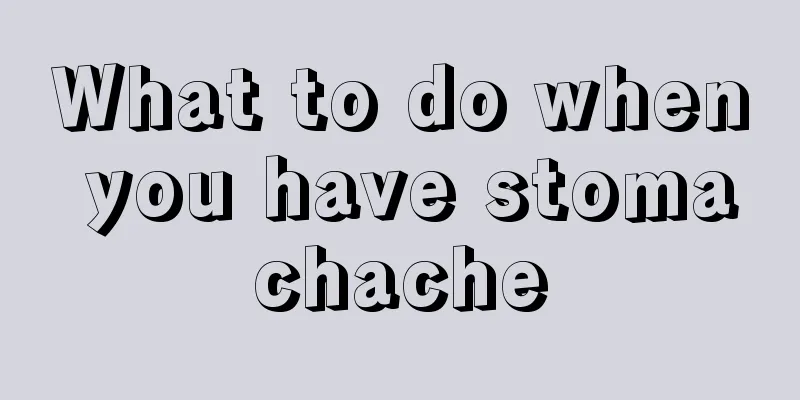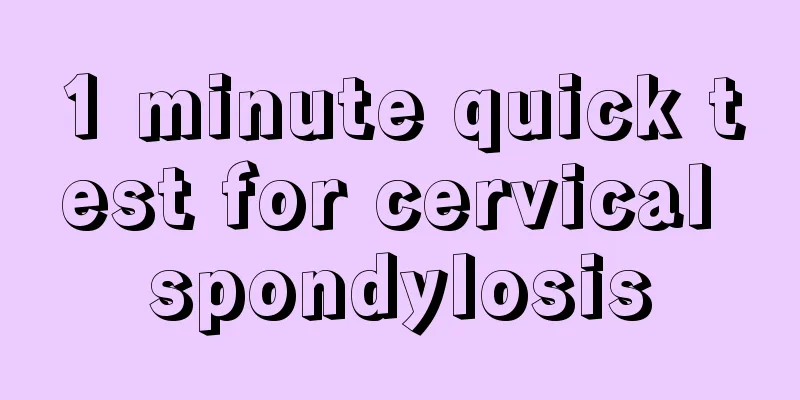What's the matter with the pain in the back of my head

|
The back of the head is a part of our brain. Many times, we often experience pain in the back of the head. In fact, generally speaking, discomfort symptoms in the back of the head will not appear for no reason. Generally speaking, pain in the back of the head is probably caused by illness. So, what is the reason for the pain in the back of the head? Let’s find out the specific reasons. There are so many reasons for pain in the back of the head. Since there are so many nerves and blood vessels in the brain, we must find the cause of the pain in the back of the head so that we can treat it. So have we figured out the specific reasons? Why is there pain in the back of my head? Neck nerve irritation Pain in the back of the head occurs intermittently. It may be caused by irritation of the cervical nerves. Sometimes when you bow your head for a long time or your neck is cold, the cervical nerves control the nerves in the back of the head. The neck muscles contract and stimulate the nerves, causing pain in the skin at the back of the head. Vascular headache If the pain in the back of your head comes in waves, it is most likely a vascular neurotic headache. Vascular neurotic headache is a common and frequently occurring clinical disease. Its manifestations are: it is triggered or aggravated by fatigue or emotional stimulation. During an attack, there is throbbing pain, swelling or stabbing pain on one or both sides of the head, accompanied by symptoms such as nausea, vomiting, insomnia, irritability, and the headache has a history of intermittent recurrence. Cerebral vasospasm Intermittent pain in the back of the head may be caused by cerebral vasospasm, which is mainly caused by long-term emotional tension and anxiety, high stress, excessive mental work, excessive thinking, poor sleep, cold stimulation and other reasons that stimulate the blood vessels. Patients may suffer from repeated headaches, dizziness, memory loss, emotional disorders, sleep disorders, anxiety, irritability or depression symptoms. Insufficient blood flow to the brain Pain in the back of the head is usually related to insufficient blood supply to the brain, which is the most common cerebrovascular disease in middle-aged and elderly people. It is usually related to arteriosclerosis caused by underlying diseases such as hyperlipidemia, hypertension, and diabetes. The formation of atherosclerotic plaques in the arteries can lead to arterial stenosis, thereby affecting the blood supply to the brain and causing some neurological symptoms. Muscle contraction headache Also known as tension headache, it is often caused by work stress, fatigue, writing, reading, long-term computer work, incorrect posture and other factors, which cause continuous contraction of the head, face or neck muscles and produce headaches. Intermittent pain in the occipital area is also the result of spasm of the muscles in the back of the neck. Occipital neuralgia Bursting pain in the back of your head may be caused by occipital neuralgia, which can be caused by infection, local irritation, or local muscle tension. The headache is mainly located in the occipital area and neck, and there may be local tenderness at the Fengchi point behind the occipital bone. Occipital neuralgia may be secondary to cervical spine diseases or tumors, etc. Recommendation: Do relevant examinations of the brain and cervical spine, such as cervical spine X-rays, CT scans, etc., to rule out headaches caused by organic lesions (which can be treated together). There are so many possible reasons for pain in the back of the head. If the pain in the back of the head keeps coming, you must be careful. Pain in the back of the head is not a trivial matter. You must go to the hospital for timely examination and timely treatment if the problem is found. What to do if the back of the head hurts There are two solutions to back of the head pain, one is Western medicine treatment, the other is Chinese medicine treatment. Western medicine treatment has greater side effects, but Chinese medicine treatment has more options. But the most important thing is to find out the reason. Western medicine treatment Painkillers and surgery to cut the nerve. Traditional Chinese Medicine Treatment 1. Acupuncture, massage and physical therapy. 2. Relax and ensure good sleep. Strengthen physical exercise, jogging, Tai Chi, etc. 3. Under the guidance of local doctors, take Zhusha Anshen Pills, Zhennaoning Capsules, and Zhengtian Pills orally. 4. If necessary, please go to the hospital's neurology department for examination, nerve block treatment, or acupoint blocking. Traditional Chinese medicine is the main method of treating cervical spondylosis and is also a relatively effective treatment measure for cervical spondylosis. Its therapeutic effect is to relieve tension and spasm of the neck and shoulder muscles, restore cervical spine movement, and loosen nerve roots and soft tissue adhesions to relieve symptoms. Cervical traction therapy This is a relatively effective and widely used treatment method for cervical spondylosis. This therapy is suitable for all types of cervical spondylosis and is more effective for early cases. physiotherapy In the treatment of cervical spondylosis, physical therapy can play a variety of roles. It is generally believed that in the acute phase, ion penetration, ultrasound, ultraviolet light or intermittent current can be used; after the pain is relieved, ultrasound, iodine ion penetration, induction electricity or other heat therapy can be used. Drug treatment Drugs can play an auxiliary symptomatic treatment role in the treatment of this disease. Analgesics, sedatives, vitamins (such as B1, B12), vasodilators and Chinese herbal medicines can be used to relieve symptoms to a certain extent. |
<<: What should I do if I feel upset
>>: The hair on the back of the head is sparse
Recommend
How long in advance should you wash newborn baby's clothes?
After a child is born, parents should provide the...
What to do if the stool is yellow and has no shape
Yellow and unformed stools are quite common. Many...
Calcium oxalate stone treatment
When it comes to calcium oxalate stones, you may ...
What are the methods for differential diagnosis of liver cancer
In recent years, liver cancer has become one of t...
What are the common methods to prevent ovarian tumors
The factors that cause ovarian tumors are still u...
How to tie your hair with a hairpin
Many women like to keep long hair, especially lik...
Immunotherapy for skin cancer has many advantages
Skin cancer is an uncommon disease in China, but ...
What are the effective methods for adults to increase height?
I believe that height is a shortcoming of many pe...
What are the disadvantages of plucking armpit hair with tweezers
Summer is here, and many female friends are going...
Does Chinese medicine treat gallbladder cancer with chemotherapy?
Primary gallbladder cancer is one of the common m...
What to do if your baby has a runny nose when exposed to a fan
It is quite common for babies to have a runny nos...
What are the causes of stomach acid after meals
Many people have recently experienced stomach aci...
What is the traditional Chinese medicine prescription for tonifying the kidney?
The kidney is a very important organ in the body,...
Symptoms of chronic nephritis, 5 signs that cannot be ignored
Chronic nephritis is a common kidney disease. Kid...
Can color Doppler ultrasound detect cervical cancer?
The cause of cervical cancer is still unclear. Cl...









